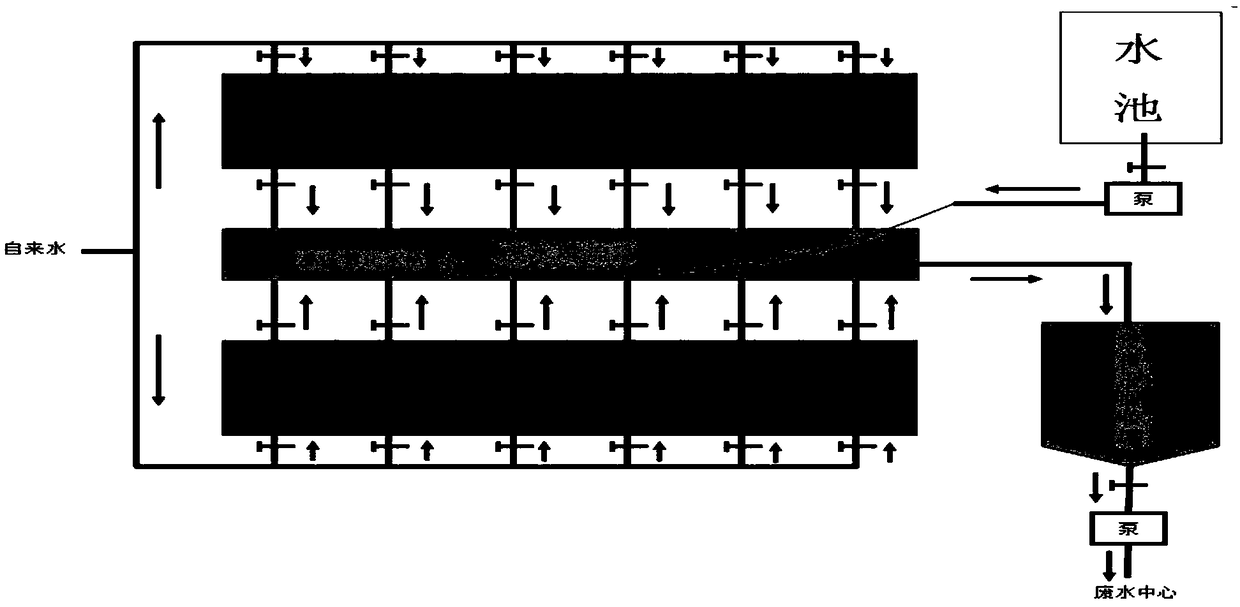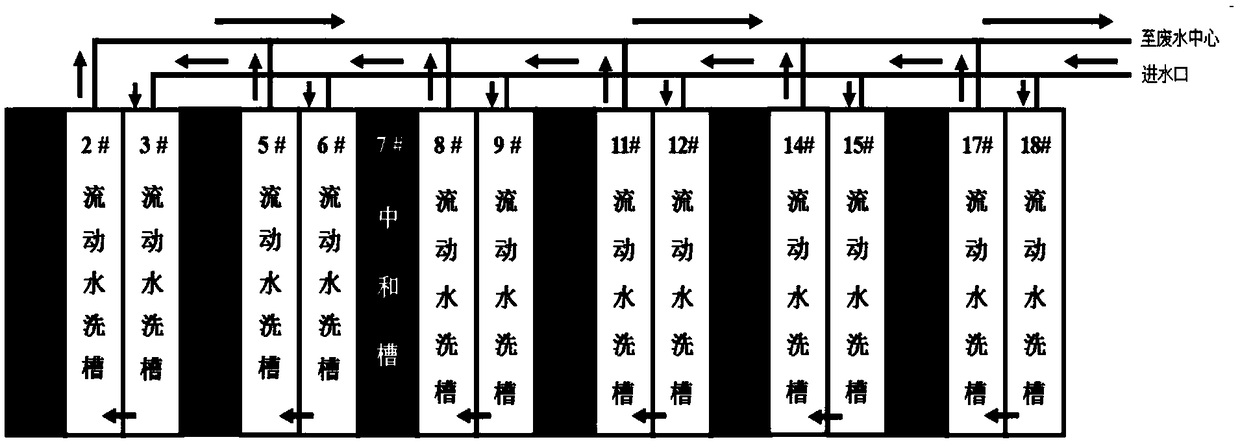System and method for recovering hole sealing agent and utilizing reclaimed water through single nickel salt coloring
A technology of sealing agent and nickel salt, which is applied in the system field of single nickel salt coloring recovery sealing agent and reclaimed water utilization, can solve the problems of large mixed waste residue, great environmental damage, increased cell voltage, etc., so as to realize the recycling of resources The effect of utilizing, reducing the discharge of industrial hazardous waste and reducing the cost of environmental protection
- Summary
- Abstract
- Description
- Claims
- Application Information
AI Technical Summary
Problems solved by technology
Method used
Image
Examples
Embodiment 1
[0204] Embodiment 1 (nickel-containing wastewater collection system operation)
[0205] Operation process of the nickel-containing wastewater collection system: open valve 1, turn on pump 1, pump the colored nickel-containing wastewater discharged from the outlet of the 14# tank bottom into the nickel-containing wastewater collection tank for standby; complete the operation process of the nickel-containing wastewater collection system;
Embodiment 2
[0206] Embodiment 2 (nickel hydroxide recovery system operation)
[0207] Operation process of nickel hydroxide recovery system: open valve 2 and 3, close valve 4, turn on pump 2, pump nickel-containing waste water into the nickel hydroxide recovery tank; open valve 4 and 6, turn on pump 3 and 1# electric stirring, and circulate Reaction solution; slowly open valve 5, suck liquid ammonia into pump 3, and use high-speed rotation of pump 3 to fully mix the reaction solution; while adding liquid ammonia, check the pH value of the reaction solution, when the pH value reaches 8.5-9.0, close Valve 5, stop dosing, continue to circulate and stir for 1 hour; open 1# filter press, open valve 7, close valves 6 and 8, and separate nickel hydroxide from solid and liquid; after repeated spraying and rinsing of nickel hydroxide solid for 10 minutes, Recover nickel hydroxide products and complete the operation process of nickel hydroxide recovery system;
Embodiment 3
[0208] Embodiment 3 (nickel phosphate recovery system operation)
[0209] Operation process of nickel hydroxide recovery system: open valve 2 and 3, close valve 4, turn on pump 2, pump nickel-containing waste water into the nickel hydroxide recovery tank; open valve 4 and 6, turn on pump 3 and 1# electric stirring, and circulate Reaction solution; slowly open valve 5, suck liquid ammonia into pump 3, and use high-speed rotation of pump 3 to fully mix the reaction solution; while adding liquid ammonia, check the pH value of the reaction solution, when the pH value reaches 8.5-9.0, close Valve 5, stop dosing, continue to circulate and stir for 1 hour; open 1# filter press, open valve 7, close valves 6 and 8, and separate nickel hydroxide from solid and liquid; after repeated spraying and rinsing of nickel hydroxide solid for 10 minutes, Recover nickel hydroxide products and complete the operation process of nickel hydroxide recovery system;
PUM
| Property | Measurement | Unit |
|---|---|---|
| thickness | aaaaa | aaaaa |
Abstract
Description
Claims
Application Information
 Login to View More
Login to View More - R&D
- Intellectual Property
- Life Sciences
- Materials
- Tech Scout
- Unparalleled Data Quality
- Higher Quality Content
- 60% Fewer Hallucinations
Browse by: Latest US Patents, China's latest patents, Technical Efficacy Thesaurus, Application Domain, Technology Topic, Popular Technical Reports.
© 2025 PatSnap. All rights reserved.Legal|Privacy policy|Modern Slavery Act Transparency Statement|Sitemap|About US| Contact US: help@patsnap.com



